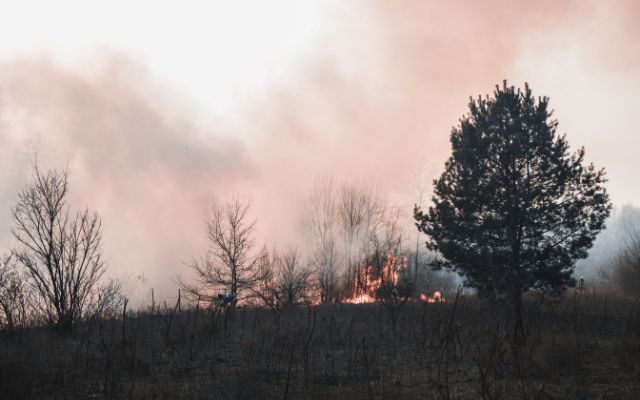As we witness more frequent and severe natural disasters like hurricanes, wildfires, and flooding, the real estate market and mortgage note investments face heightened vulnerability. Understanding these environmental risks and implementing effective strategies can help safeguard your investments and move uncertain times.
First and foremost, let’s address the elephant in the room: natural disasters. Hurricanes, wildfires, and flooding can wreak havoc on properties, leading to significant damages and financial losses.
Natural Disasters

Imagine the aftermath of a powerful hurricane or a raging wildfire; the devastation can be immense. Properties may suffer structural damage, and the surrounding infrastructure could be severely compromised. Such events not only incur hefty repair costs but also disrupt local economies and communities.
But it’s not just the immediate impact that investors need to consider. These disasters often leave lasting scars on the affected areas. Property values may plummet as buyers become wary of investing in disaster-prone regions.
Insurance companies, too, respond by hiking premiums to cover the heightened risks, further squeezing property owners’ finances. This, in turn, can lead to increased delinquency rates on mortgage loans as homeowners struggle to meet their financial obligations.
So, what’s an investor to do in the face of such environmental risks? Here are some friendly tips to guide you through:
1. Research and Due Diligence
Before diving into any investment, arm yourself with knowledge. Research the historical data on natural disasters in the area you’re considering. Understand the local climate patterns, flood zones, and wildfire risk areas. Thorough due diligence upfront can help you make informed decisions and avoid potential pitfalls down the road.
2. Diversification
Don’t put all your eggs in one basket. Diversifying your real estate portfolio across different geographic regions can help mitigate the impact of localized disasters. Investing in properties in regions less prone to environmental risks can provide a buffer against sudden downturns in specific markets.
3. Insurance Coverage

Adequate insurance coverage is your first line of defense against environmental risks. Make sure your properties are adequately insured against various hazards, including hurricanes, wildfires, and flooding. Review your insurance policies regularly to ensure they provide adequate coverage and consider adding supplemental coverage if necessary.
4. Risk Management Strategies
Develop robust risk management strategies tailored to address environmental risks. This could include setting aside reserves for emergency repairs, conducting regular property inspections to identify potential vulnerabilities, and implementing proactive measures to mitigate risks, such as installing fire-resistant materials or flood-proofing measures.
5. Long-Term Perspective
Keep a long-term perspective when evaluating your investments. While environmental risks can pose immediate challenges, resilient markets often bounce back over time. Consider the underlying fundamentals of the areas you’re investing in, such as population growth, job markets, and infrastructure development. A well-positioned property in a resilient market can weather temporary setbacks and deliver sustainable returns over the long haul.
6. Stay Informed and Adapt
Environmental risks are dynamic and evolving. Stay informed about emerging threats and regulatory changes that could impact your investments. Be prepared to adapt your strategies accordingly to mitigate new risks as they arise.
Weathering the Risks
While environmental risks pose challenges to real estate markets and mortgage investments, they also present opportunities for smart investors who are prepared to navigate them effectively.
By understanding the nature of these risks, conducting thorough due diligence, implementing robust risk management strategies, and maintaining a long-term perspective, you can mitigate the impact of environmental hazards and safeguard your investments against unforeseen challenges.
You May Also Want to See:
- AI & Data Analytics: The Future of Mortgage Note Investing
- Top 5 Skills Every Mortgage Note Investor Should Develop
- Building Your Dream Team in Mortgage Note Investing: Who to Choose and Why
- Mastering Lender Borrower Relations in Mortgage Note Investing
- Environmental Risks in Real Estate and Note Investments
